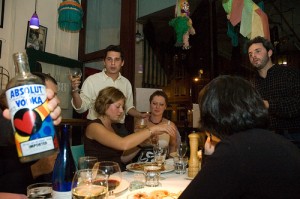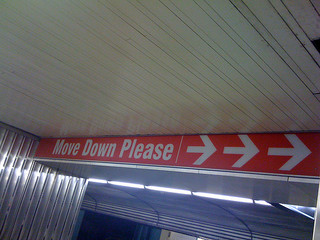
Our lives are often defined by the impossibilities we face, and that can lead to some strange decisions. Take, for example, the hit TV show Breaking Bad: a middle aged chemistry teacher with inoperable lung cancer decides it’s easier cook and deal meth than to ask others for help with his treatment. That’s the whole premise, and a new article in The Sunday Times suggests Mr. White’s decision may be the result of a heavy dose of the “masculine mystique.”
First published by W.W. Norton & Co. in 1963, Betty Friedan’s The Feminine Mystique argued that the dissatisfaction women felt with their lives wasn’t due to a “modern lifestyle” driving them away from an ideal feminine identity, but rather their inability to even imagine living full, independent lives. Friedan called upon women to recognize this possibility: a life free of gendered expectations.
Today, Stephanie Coontz suggests the media blitz over the “crisis of boys” (lower grades, reduced college graduation rates, and slipping economic prospects for men) stems from a similar problem with gender roles:
In fact, most of the problems men are experiencing today stem from the flip side of the 20th-century feminine mystique—a pervasive masculine mystique that pressures boys and men to conform to a gender stereotype and prevents them from exploring the full range of their individual capabilities.
The masculine mystique promises men success, power and admiration from others if they embrace their supposedly natural competitive drives and reject all forms of dependence. Just as the feminine mystique made women ashamed when they harboured feelings or desires that were supposedly “masculine”, the masculine mystique makes men ashamed to admit to any feelings or desires that are thought to be “feminine”.
Coontz also uses research on men’s shame around femininity and its impact on boys’ ability to imagine excelling in the classroom. Sound familiar?
In a book to be published next month, the sociologists Thomas DiPrete and Claudia Buchmann demonstrate that most of the academic disadvantages of boys in education flow not from a “feminised” learning environment, as is often claimed, but from a masculinised peer culture that encourages disruptive behaviour and disengagement from school. As Debbie Epstein, the British researcher, puts it, “real boys” are not supposed to study. “The work you do here is girls’ work,” one boy told an educational ethnographer. “It’s not real work.”
Gender roles create impossibilities for men and woman. And, while Breaking Bad takes the masculine drive for independence to a fictional extreme, the new lag in boys’ educational and economic achievement can be a new century’s call to get everyone to, in Coontz’s words, “act like a person, not a gender stereotype.”









